-
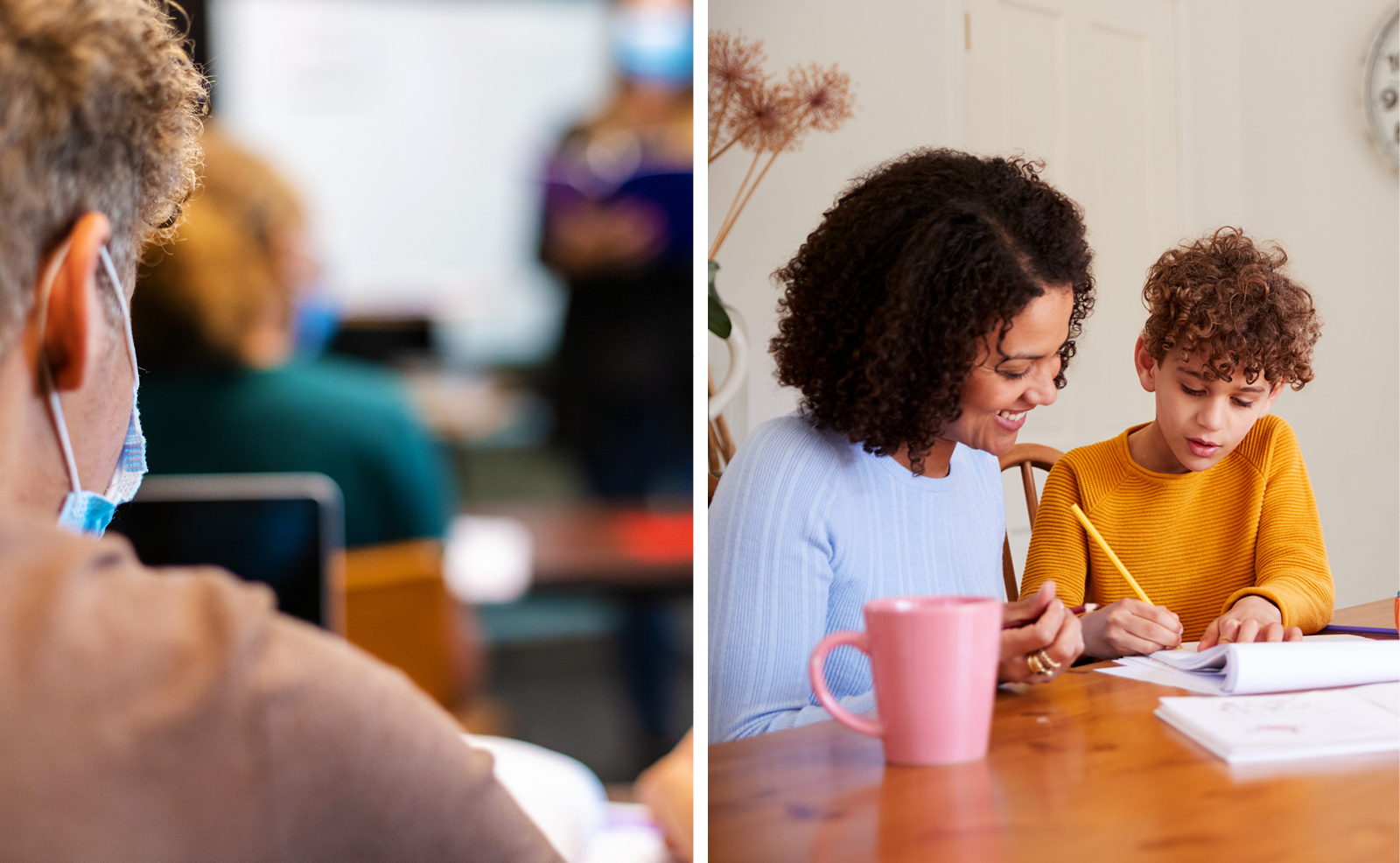
Each of the Court's civic education tools offers teachers or parents everything they need. The lesson plans align with the Ohio Department of Education (ODE) Learning Standards. Available at no cost, the lesson plans are designed to be viewed online, and also can be printed. They offer day-by-day instructions and give tips to adapt multi-day study to fewer sessions. Also among the resources are short, snappy videos that will resonate with nearly any age.
-
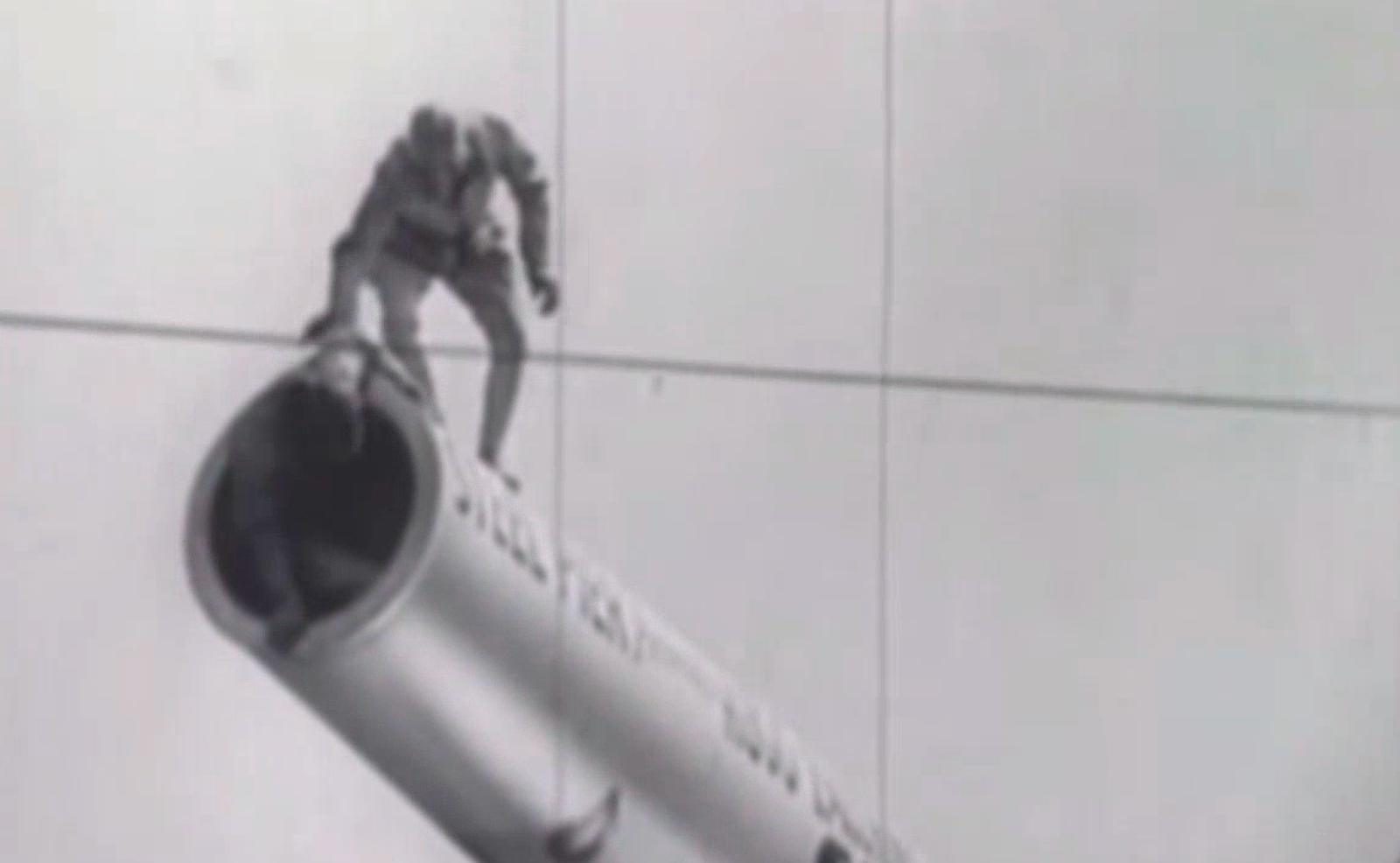
EXPLORE HUMAN CANNONBALL’S FLIGHT THROUGH COURTS
The newest of the Court’s civic education resources sets up a mock trial for students based on a real 1970s legal dispute between a man who performed a human cannonball act and an Ohio television station that broadcast the full performance. Included: video footage of a human cannonball act and a transcript from the newscast.
-
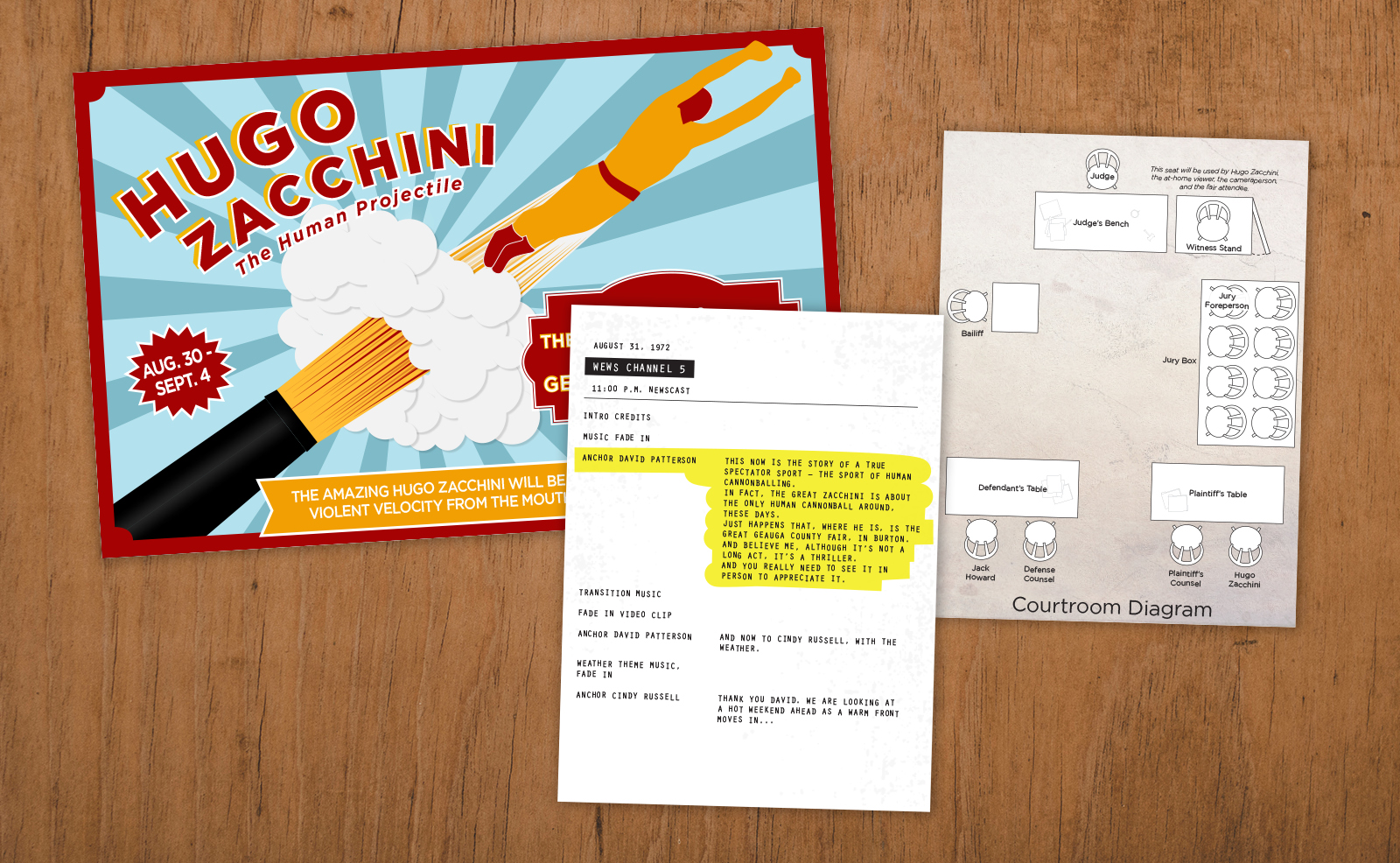
The “Human Cannonball” lesson plan centers on a script of the trial, where students take on roles – as judge, jury foreperson, attorneys, bailiff, witnesses, and others – and decide the outcome. Instructors are provided with a courtroom layout, a lesson guide, worksheets, and a case timeline.
ODE Learning Standards: Fourth- and eighth-grade social studies. Fourth-grade through eighth-grade English language arts.
-
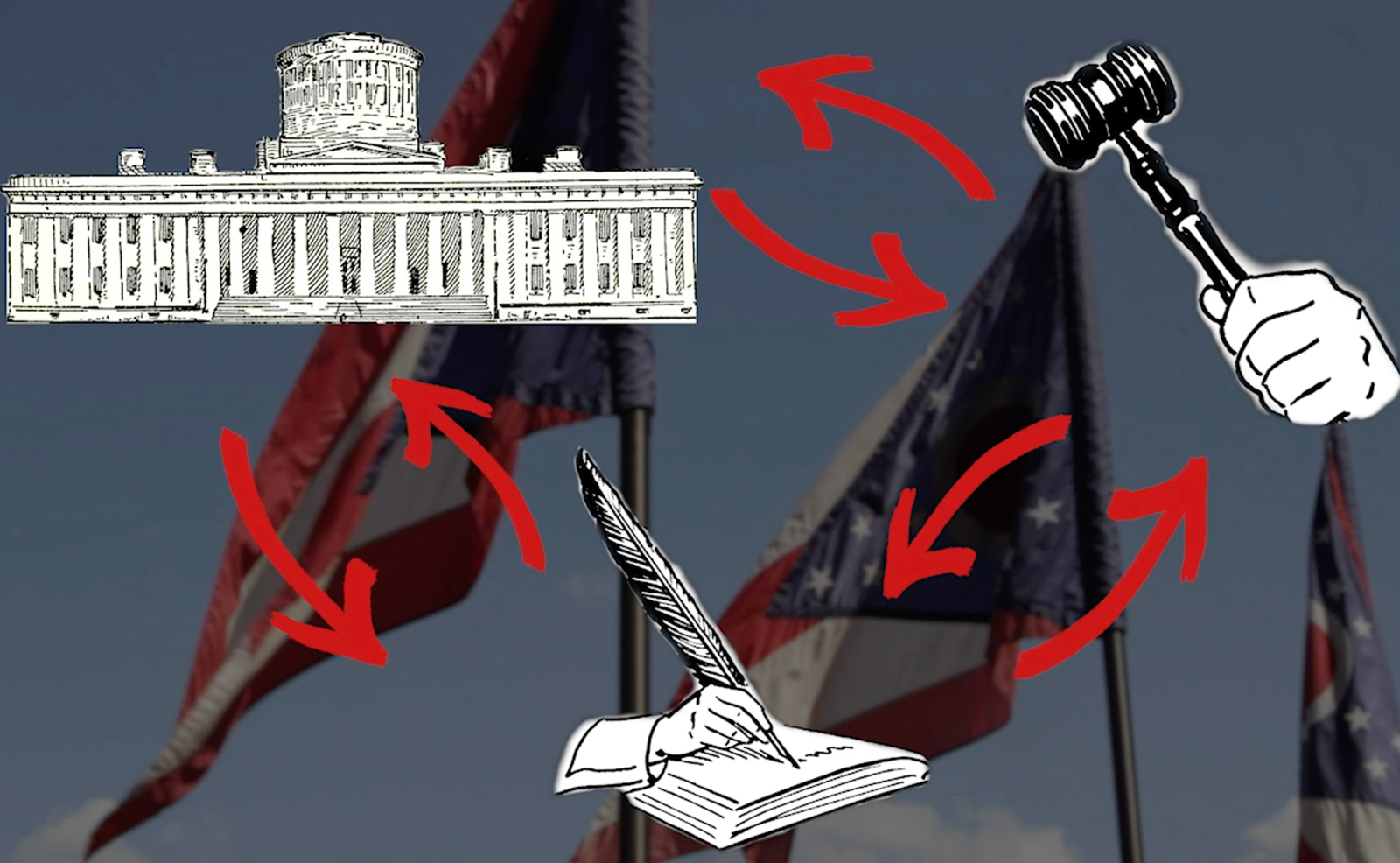
UNDERSTAND STATE GOVERNMENT FUNDAMENTALS
The video “Ohio's Three Branches of Government” delves into who does what in Ohio’s judicial, legislative, and executive branches. It’s a fun and fast-paced look at the critical concept of checks and balances and the role of the state and federal constitutions.
-

“Ohio's Three Branches,” which works well for social studies and government classes, also is part of the new mock trial activity (Slides 2 and 3). The video provides a great introductory lesson for students who visit the Thomas J. Moyer Ohio Judicial Center and Ohio Supreme Court – once it’s safe again for student tours of the building.
Geared toward: All ages
-
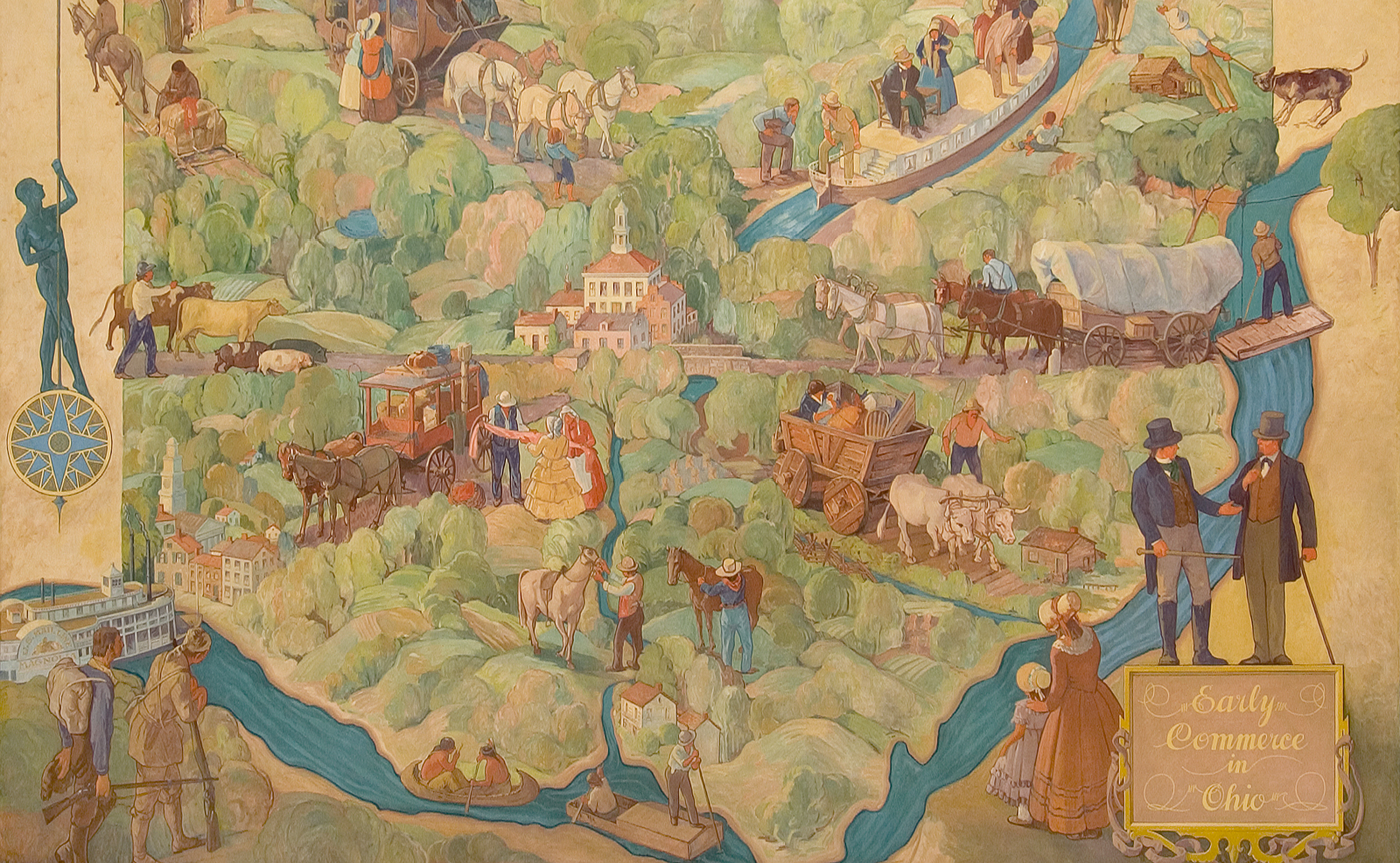
LEARN STATE HISTORY THROUGH SUPREME COURT ARTWORK
“Ohio’s Pride” lets students take a close-up look at the building’s colorful murals. They learn Ohio history by exploring the state’s innovations and evolving transportation modes over time, as depicted in the artwork – and about the artist and the ways art can capture the history of an era.
-
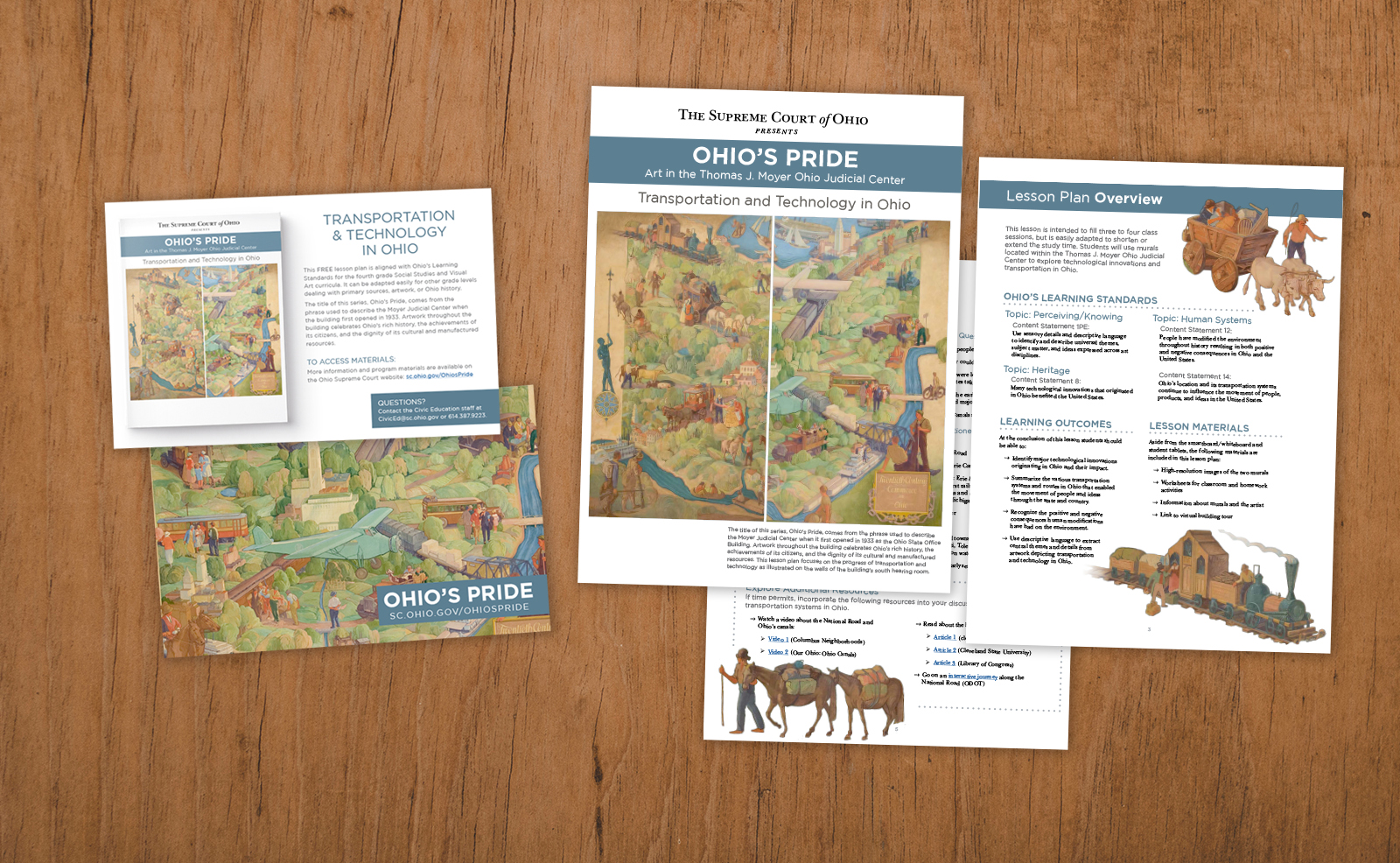
Along with vivid reproductions of the murals, “Ohio’s Pride” provides student worksheets and a state transportation and technology timeline. While designed for elementary school classes, this lesson can be adapted easily for any student learning about, or interested in, history or art.
ODE Learning Standards: Fourth-grade social studies or visual art.
-
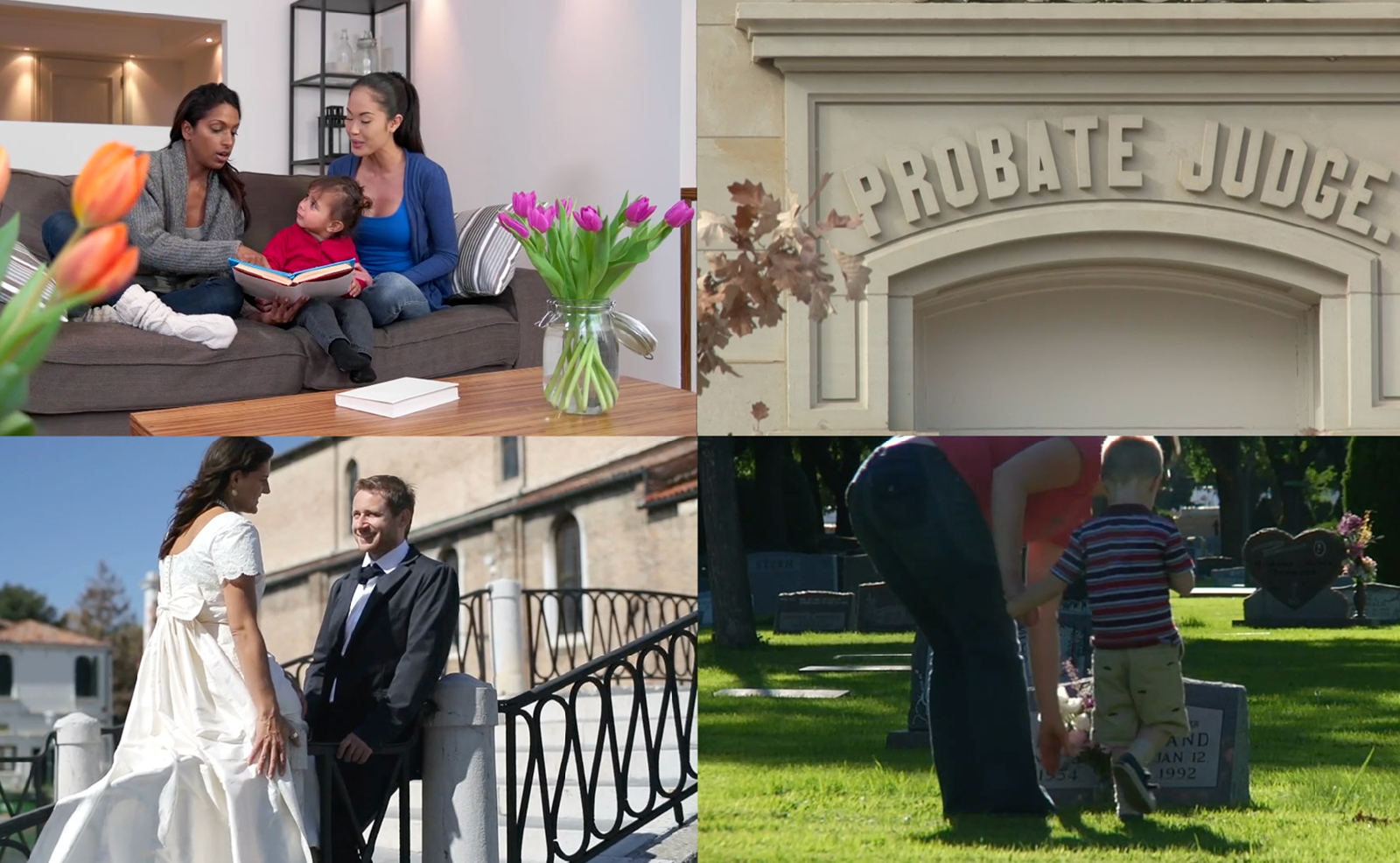
MASTER THE BASICS OF OHIO’S COURTS
The judicial branch is often a mystery to students, and sometimes to the general public. Many are familiar with TV depictions of trial courts, but that’s only one piece of the justice system. “How Does Ohio’s Court System Work?” is an energetic explanation of each level of the state judicial branch.
-

With former Justice Yvette McGee Brown as a guide, the entertaining primer surveys the different types of trial courts as well as the functions of the intermediate state appellate courts and the Ohio Supreme Court. The six-minute video also touches on individual legal rights and discusses Supreme Court oral arguments and decision-making.
Geared toward: All ages
-
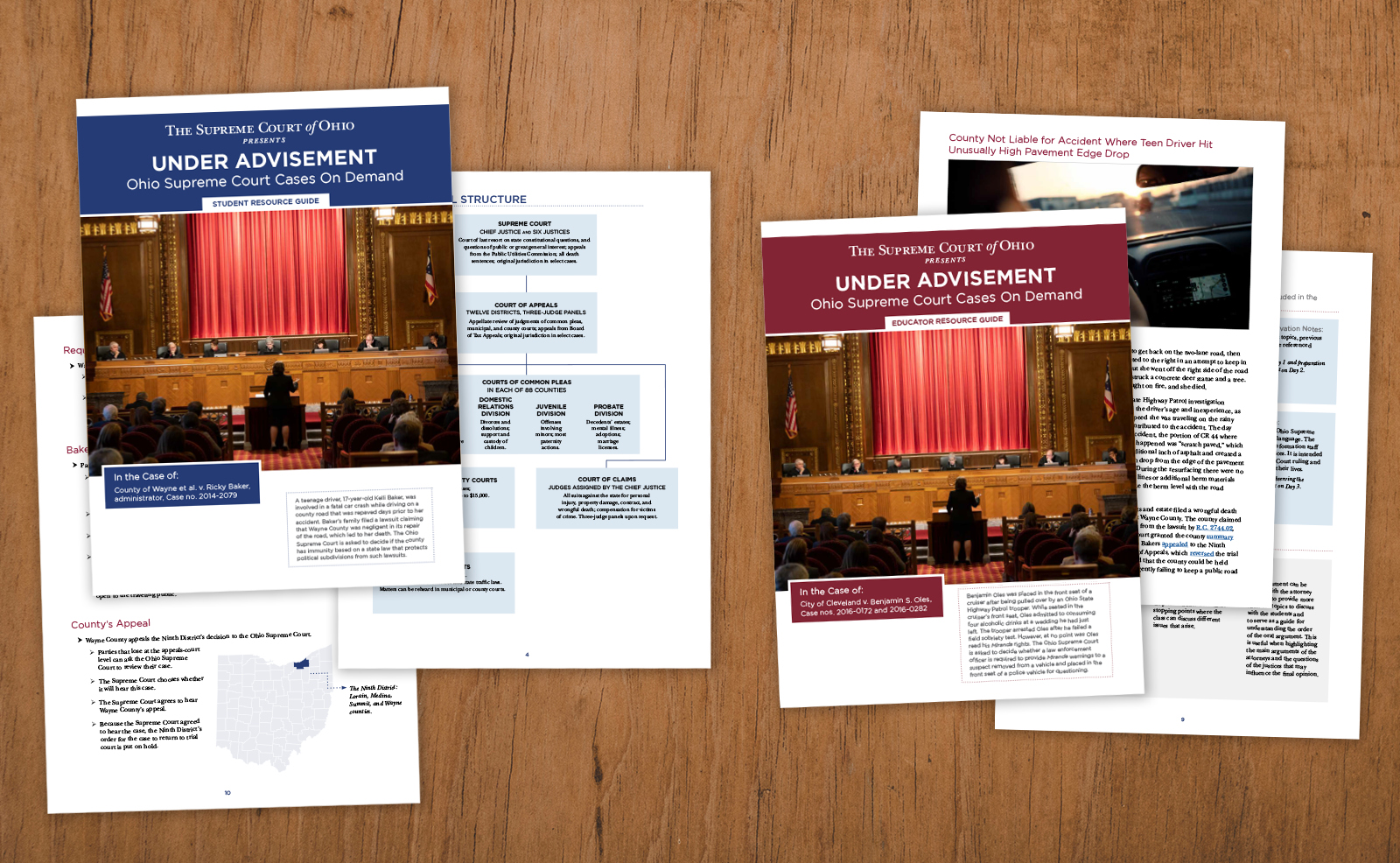
FOLLOW CASES STEP BY STEP THROUGH OHIO’S COURTS
With “Under Advisement: Ohio Supreme Court Cases on Demand,” students track civil and criminal cases from their beginning in a trial court up through the ruling from the Ohio Supreme Court. “Under Advisement” offers the case background, each side’s arguments, video of the oral argument before the Supreme Court, and a news article about the Court’s decision. Educators are encouraged to invite a local judge or attorney to join class sessions for a real-world connection to the legal system and courts. Additional resources: an annotated guide to the oral argument, detailed lesson plans, information about how to contact local attorneys, and a legal glossary.
-
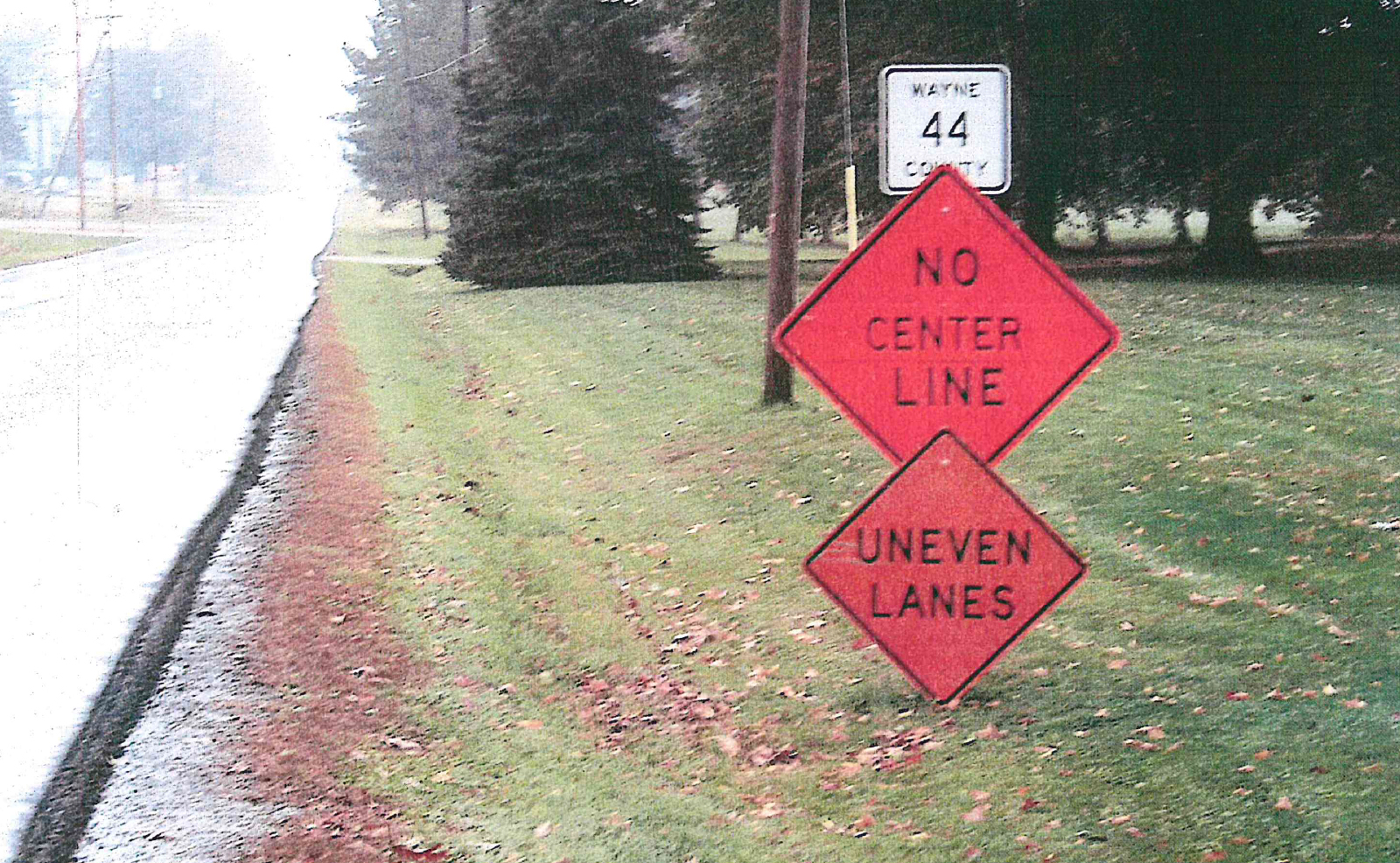
In the featured criminal case, a man who is pulled over and placed in the front seat of a police vehicle answers an officer’s questions but isn’t read his Miranda rights. The civil case, which examines the government’s general immunity from liability, involves a teenage girl killed in a car crash on a recently repaved county road. In the works: A new lesson plan for a criminal case revolving around the constitutional right to be free from illegal search and seizure.
ODE Learning Standards: High school American government
-
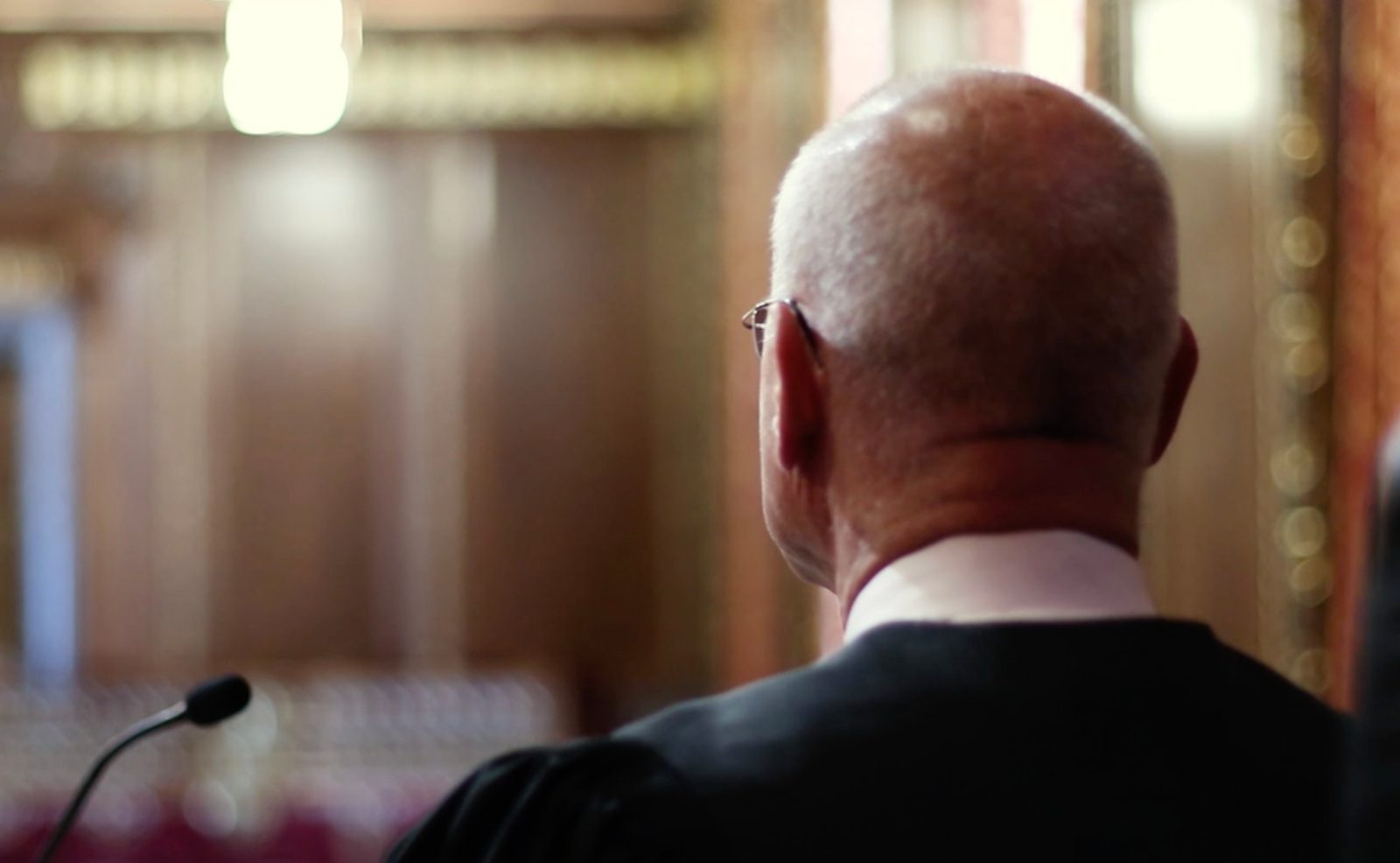
DIVE DEEPER INTO THE OHIO SUPREME COURT
“A Day in the Life” shares little-known knowledge about the Ohio Supreme Court. The video answers questions such as: How many cases does the Supreme Court hear? What’s it like for attorneys to participate in the Court’s oral arguments? How do attorneys sum up months or years of work on a case into their 15 minutes before the Court?
-
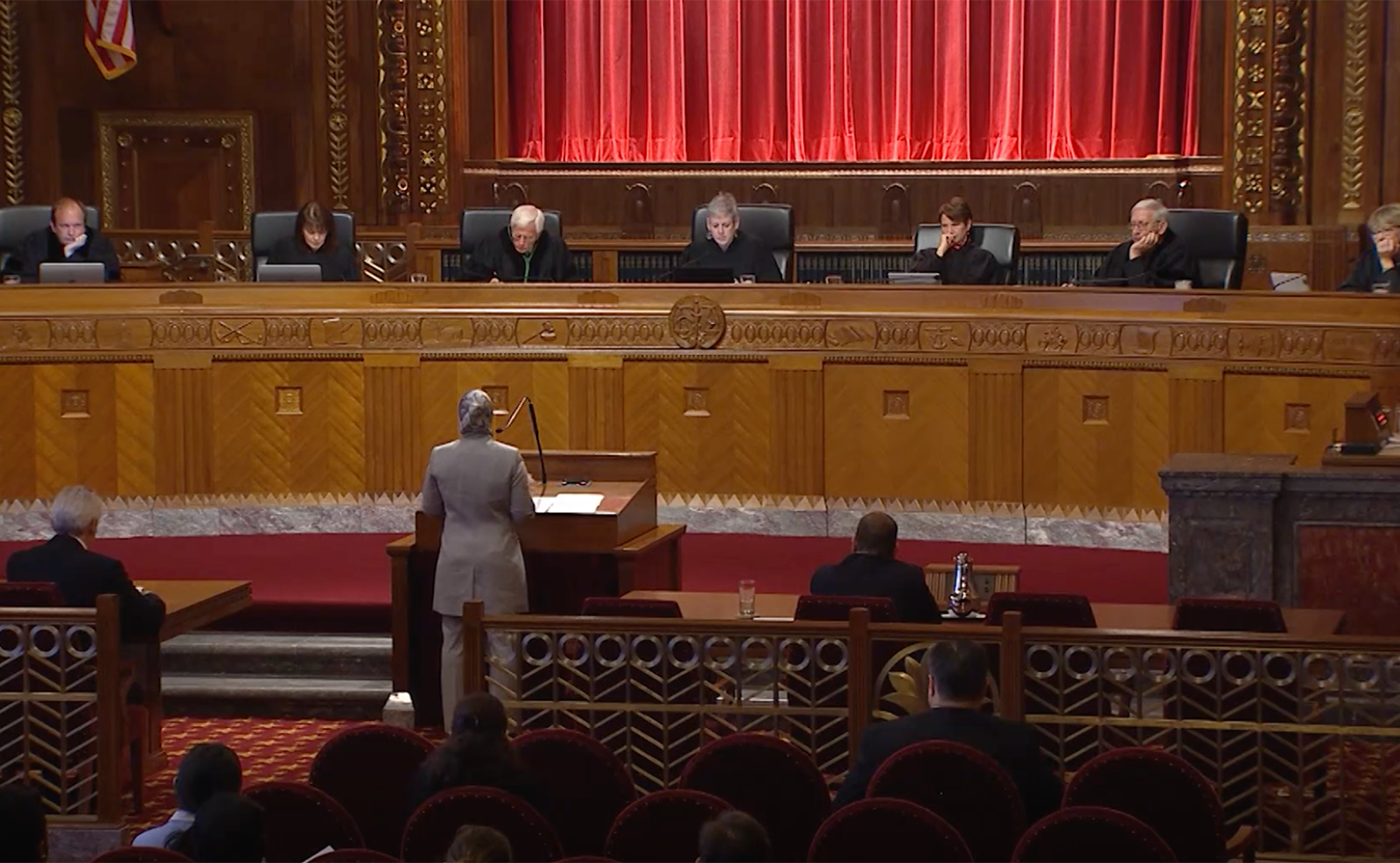
The video is peppered with footage of the justices asking questions from the bench and attorneys presenting their arguments. Chief Justice Maureen O’Connor describes the types of cases the Supreme Court accepts, the broader importance of Court decisions, and how the justices decide who will write the Court’s opinion. Marbles play a key part. Need we say more.
Geared toward: All ages
-
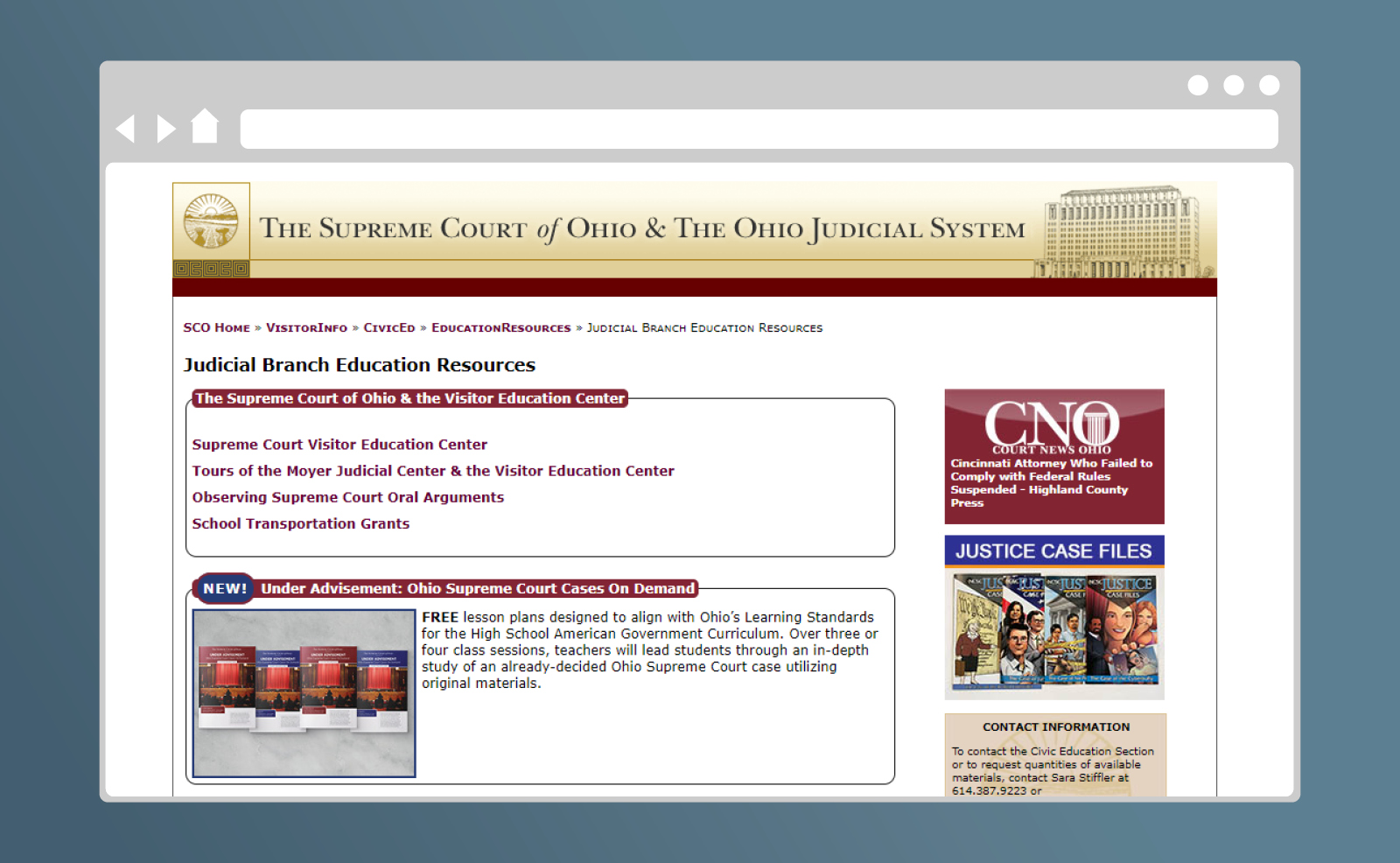
WAIT, THERE’S MORE
The Court’s civic education staff continues to gather and develop resources to aid teachers, parents, and students. Additional videos and print resources, covering topics such as jury service and how a bill becomes law, can be found at https://www.supremecourt.ohio.gov/education/civic-ed/judicial-branch-education-resources/, along with materials produced by the National Center for State Courts. Bookmark that page to check regularly for updates.














